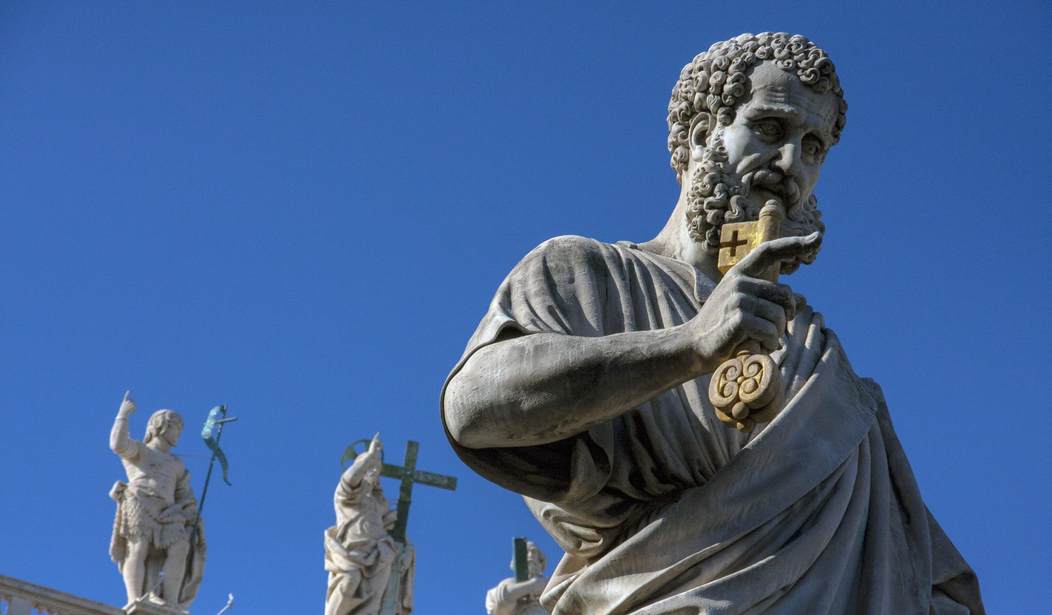The Telegraph is reporting that the bones of Saint Peter were discovered in a church in Rome. One of the three disciples in Jesus’s inner circle, Peter died nearly two thousand years ago. Church tradition teaches that Peter was crucified upside down in 64 A.D. as part of Nero’s purge of Christians after the great fire in Rome. Since 1968, the Roman Catholic Church has venerated bones discovered in 1950 under St. Peter’s Basilica as Peter’s bones. This new discovery doesn’t necessarily contradict current Catholic belief, though.
Long revered as the first pope, Saint Peter is an important figure in the Roman Catholic Church. After World War II, a casket bearing the inscription “Peter is here” was found.
The remains were forensically examined in the 1960s, with experts concluding that they belonged to a man in his early sixties who lived in the first century AD. That was proof enough for Pope Paul VI, in 1968, to declare them the bones of St Peter.
Those remains have been assumed to be the remains of Saint Peter. In 2013, Pope Francis allowed the bones to be displayed in public for the first time. Questions over whether or not the Vatican is actually in possession of Peter’s bones or not continue to be debated. This new discovery will add to the intrigue and fuel further speculation.
Found in the Church of Santa Maria in Cappella, Italy, the bones were inside clay pots covered over by a marble slab. According to The Telegraph, during restoration work, a worker moved the slab and “came across two Roman-era pots with inscriptions on their lids indicating that inside were not only bone fragments from St Peter but also three early popes – Cornelius, Callixtus and Felix – as well as four early Christian martyrs.”
One of the mysteries is how the bones ended up in Cappella — if they are indeed the bones of Peter. Some believe that Pope Urban II moved the bones during the schism created by the Investiture Controversy. The theory states that Pope Urban II wanted to protect the bones from the anti-pope Clement III who was in power in Rome.
The find wasn’t necessarily a surprise, though, as The Telegraph makes clear:
It had been known for centuries that the relics might exist – they are recorded on a stone inscription in the church, which claimed they were kept alongside a fragment of a dress worn by the Blessed Virgin. But until now, the relics had never been found.
Turned over to a church deacon, the bones were sent to the Vatican. The Vatican plans on testing the bones and doing a DNA analysis to see whether or not the newly discovered bones match those found in 1950.
It will be interesting to hear the results of the Vatican’s research. No essential matters of the Christian faith are tied to either set of bones being Peter’s. In fact, the potential problem about how to explain Peter’s bones being in two places is minimal, if a problem at all. If the DNA between the two sets of bones matches, the Vatican can simply claim that Pope Urban II didn’t move all of Peter’s remains. However, the results hold great archeological and church history interest.









Join the conversation as a VIP Member